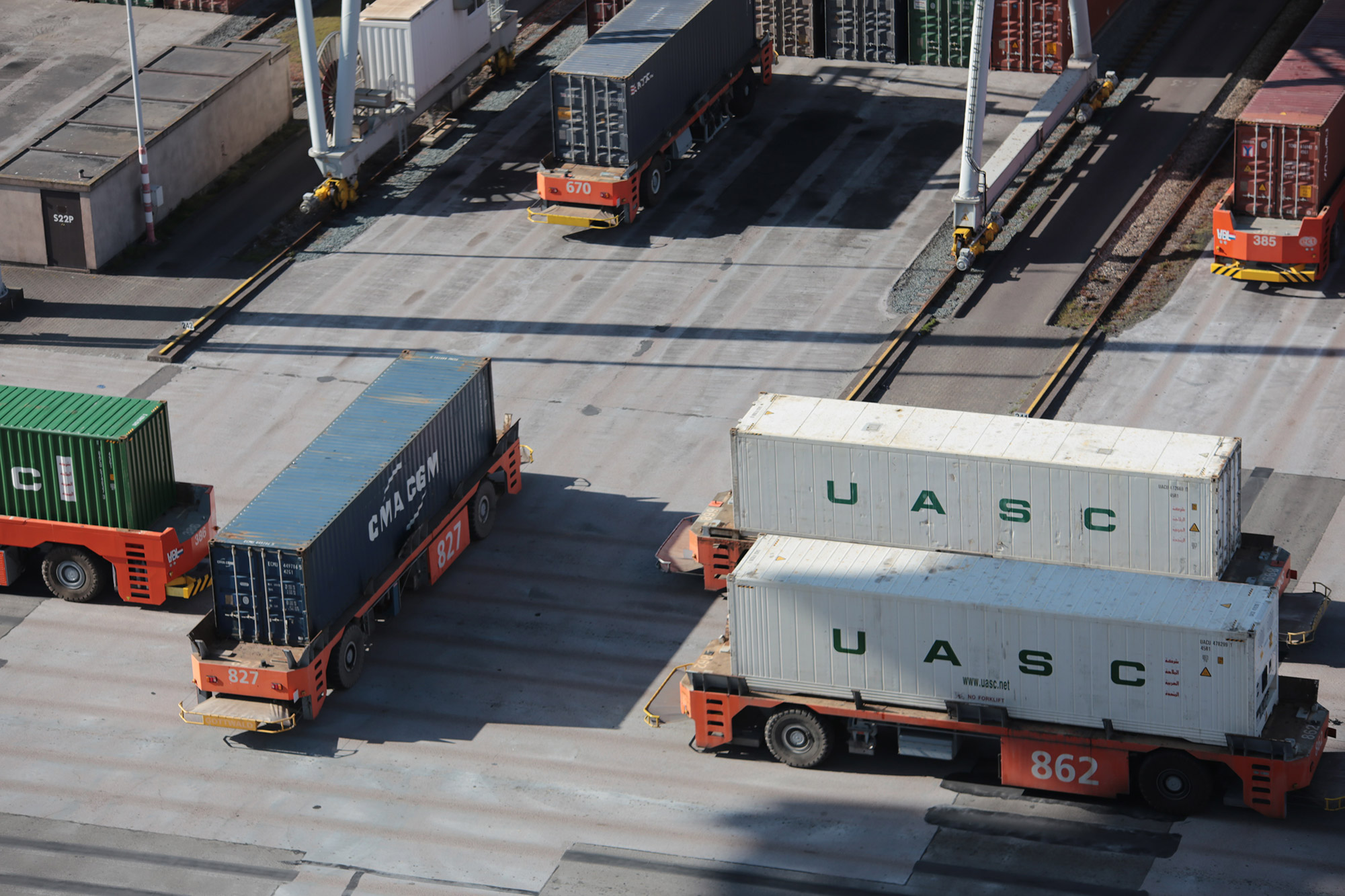
How can collaborative efforts in an industrial area improve resource wisdom?

Freight cooperation solutions for reducing the environmental impact of logistics
freight cooperation, cooperation, fill rate, freight logistics, driving arrangements, ecosystem, optimisation, rationalisation
Operators located in an industrial area can reduce their environmental impact by merging and centralising their freight logistics solutions. This also brings about operational benefits as higher volumes are an advantage in tendering processes, a comprehensive solution means a lighter workload and a joint solution for the industrial area is a more efficient operating model.
- Economy: freight cooperation needs to support climate goals but it also needs to be profitable.
- Commitment: companies need to be committed to their freight cooperation solution, which represents a collaborative economy used for the purposes of purchases.
- Needs: there are synergy benefits but also different needs, and these have to be incorporated into a functioning system.
This solution is right for you if
- you are interested in ways to reduce emissions from your company’s freight logistics;
- your company is located in an area where there are many other companies with similar freight logistics requirements;
- you represent a company focused on freight transport and logistics and want to offer carbon reduction solutions to your customers.
BASIC FACTS
- A freight cooperation system is suitable for companies that are geographically close to each other and have similar needs in terms of freight transport.
- It can be implemented in industrial areas that are in the planning, construction, development or active phase of their life cycle.
- The concept of freight cooperation has been implemented within the framework of futures research. Its practical applications require industrial area- and partner-specific assessment and implementation.
- The concept is implemented by:
- University of Turku, Finland Futures Research Centre (FFRC), Essi Silvonen
- The HNRY project’s transport and logistics solutions forums
- Practical applications have been evaluated in cooperation with Post Nord Oy
Freight transport cooperation challenges the mainstream operating model
In terms of palletised and parcelled goods and parcel traffic, outbound goods are most commonly picked up by transport companies and delivered to the nearest terminal every day. They are then transported to the terminal closest to the destination in the evening and at night, then distributed to their recipients.
Line haul loads tend to have a high fill rate, so they are quite highly optimised in terms of environmental impact and pricing. The collection and distribution of cargo generates more emissions.
There are two ways to enhance carbon neutrality and resource wisdom: 1) by reducing emissions from the fleet; and 2) by optimising operations, which is done by improving the fleet’s utilisation rate and reducing the total mileage. The concept of freight cooperation in an industrial area was developed to challenge the model generally used for transporting goods, in which each company independently invites tenders for its freight transport solutions. The challenge starts by connecting buyers to optimise operations, increase utilisation rates and reduce mileage.
Outbound operations are easy to optimise, but the model needs to be assessed at the system level
The idea for outbound freight is that companies located in an industrial area negotiate a centralised agreement with one transport company, which picks up the goods from all companies in the area in a way that achieves the optimal fill rate. This reduces heavy traffic in the area and has a direct impact on reducing emissions. Companies in the area can also explore the advantages of having a central logistics point/terminal and its suitability for their operations. This allows outbound and inbound freight traffic to be directed to a single destination in the area, and it also reduces lorry traffic. This “first mile” idea is relatively easy to implement, but the situation requires a more comprehensive assessment, both at the industrial area level as well as the district level, so that optimising the operations in one area or of one transport company does not have negative impacts at the system level.
The more challenging aspects of freight cooperation require solutions for their practical implementation
The concept is more complex for incoming freight as various transport companies carry out a large number of deliveries. Transport companies try to combine deliveries but it is difficult in practice due to loading orders, service requirements and schedules. Optimising the system for the transport of outbound and inbound freight may, however, have a significant impact on the mileage, but it requires the development of cooperation between transport companies and service requirements, for example.
Cooperation between transport companies would make it possible for one company to distribute incoming freight to an industrial area if the company selected also picked up the freight from the terminals of the other transport companies. Competition legislation on what information can be shared may also make it more difficult for transport companies to promote this idea. One possible solution would be a separate operator responsible for picking up and distributing goods in the industrial area or a company that specialises in providing climate-friendly transport services.
Freight cooperation solutions have a significant impact on the emissions and attractiveness of an industrial area
The aim of the freight cooperation concept is to save energy/fuel, carry out freight transport operations with the lowest possible mileage and reduce the number of heavy vehicles passing through an industrial area, which makes the area more attractive and safer while reducing noise.
The effectiveness of the concept can be measured by the daily fill rate and mileage of delivery vehicles. It can also be determined how much of the freight that is distributed in fuel-powered vehicles could be transported in electric or human-powered vehicles. The cooperation also allows smaller companies to benefit from larger volumes, giving them a better bargaining position in negotiations with transport companies.
Freight cooperation exploits synergies, or the needs shared by companies, and it is applied to the principles of sharing so that the resource to be shared and optimised is the freight transport capacity; the aim is to maximise the fill load of individual transport vehicles and, consequently, reduce the climate and cost impacts of an individual delivery.
TAKE-HOME MESSAGES
- Trade fair logistics is a good example of a practical application based on this idea: one partner is typically selected to provide all services in an area.
- The development of an operating model based on the idea of freight cooperation can also work in logistics operations in cities and construction sites when the aim is to reduce heavy traffic in urban areas.
- The service promise to the customer is a central theme of the freight transport concept. It will also be necessary to resolve transport companies’ liability issues in the joint procurement model.
- In addition to the industrial area-specific analysis, the situation needs to be assessed locally so the efforts of one industrial area or transport company to optimise its operations does not result in a poorer fill rate or more mileage elsewhere.
Sources:
HNRY – Traffic and logistics solution forum 14 Novermber 2019, expert presentations, materials and workshop materials
Piloting / assessing the suitability of logistical solutions from the viewpoint of a producer, executed by PostNord Kimmo Hyttinen 18 December 2020 and Sonja Heikkilä 14 January 2021
More information: University of Turku, Finland Futures Research Centre, Essi Silvonen, esersi@utu.fi
” We and other transport companies need to gain a genuine understanding and interact with our customers in the development of innovative and sustainable solutions – the industry will turn upside down in the coming years.”
– Kimmo Hyttinen, PostNord 14.11.2019
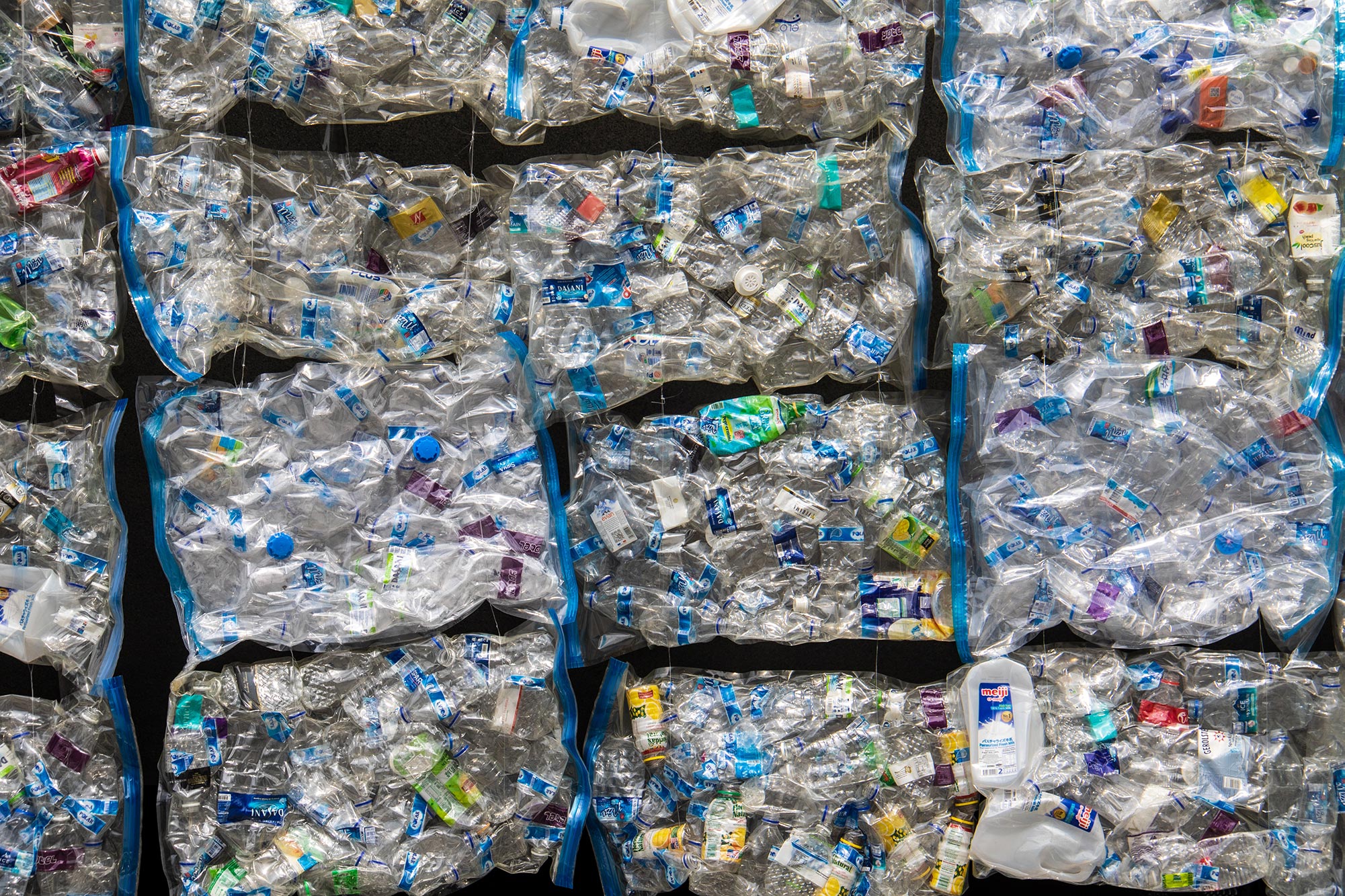
Can plastics recycling be profitable?

Plastics recycling in industrial areas
plastics, plastics recycling, circular economy, resource wisdom, business cooperation, port, waste, value chain, piloting, reuse
It has become apparent that more plastics need to be recycled. The purpose of this concept is to launch plastic recycling activities in industrial areas and to create cooperation between companies to achieve climate goals. An experiment was carried out to illustrate the functionality of recycling, to obtain information about the volumes of plastics and to collect feedback from companies in Vuosaari Harbour.
- 6443 kg/year: the theoretical amount of plastic waste generated in Vuosaari Harbour.
- 80% of the collected plastics could be reused instead of being used to produce energy according to the pilot project.
- Emissions: carbon dioxide emissions are significantly lower in recycling-oriented solutions than in the current solution in which plastic waste is mainly burnt.
This solution is suitable for
- cities that want to encourage companies to do their bit for climate change;
- companies that want to start recycling their waste or improve their existing procedures;
- companies that are looking for new business opportunities in the recycling sector.
BASIC FACTS
- Location: Vuosaari Harbour, Helsinki
- Life cycle: active phase.
- Organisers: Satu Pasanen/VTT Technical Research Centre of Finland, Juha Hakala/VTT Technical Research Centre of Finland, Saara Pellikka/City of Helsinki.
- Time span: 3 months – 1 year.
- A ‘plastic pilot’, a joint experiment to collect plastic waste from companies, was carried out during the concept development phase. Packaging plastics and plastics from logistics operations were collected from companies in Vuosaari Harbour. The pilot project was carried out in cooperation with the City of Helsinki and the Port of Helsinki between 16 November and 31 December 2020.
- The recycling solutions were compared to the current ones from the perspective of the economy and carbon emissions.
- The concept encourages the reuse of plastics.
The first plastic recycling concept in Vuosaari Harbour
National and international targets, such as the plastics roadmap for Finland and the EU plastics strategy, accelerate the recycling of plastics. The concept was inspired by the enthusiasm of companies in Vuosaari Harbour for recycling – it started at the grassroots level. The purpose of the concept is primarily to start collecting plastics in the industrial area and, secondarily, to promote cooperation between competing companies to achieve the climate goals.
During the conceptualisation phase, a pilot project was carried out in collaboration with public-sector operators, companies and a research institute. Practical experiments such as this produce scientifically valid and pragmatic data, encourage companies to try new work methods and increase dialogue between cities and businesses.
Piloting provides facts for conceptualisation
A ‘plastic pilot’, a joint experiment to collect plastic waste from companies, was carried out during the concept development phase. Packaging plastics and plastics from logistics operations were collected from companies in Vuosaari Harbour. The pilot project was carried out in cooperation with the City of Helsinki and the Port of Helsinki between 16 November and 31 December 2020. Seven logistics companies took part. Plastic material was collected in a waste compactor equipped with a smart scale, which was on loan from Europress Group Oy for the duration of the test.
A total of 812 kg of various types of plastics was collected, mainly polyethylene (LDPE) and polypropylene (PP), which were taken to be reused. The plastic materials were sufficiently clean for the purposes of the collection experiment. Participants filled in a questionnaire afterwards that collected feedback and user experiences for concept development. Most participants found it easy to take part in the plastic pilot and joint collection efforts. Companies thought that collaboration was viable, especially with regard to waste management and other environmental services.
Comparative information with economic and environmental perspectives
The economic perspective was illustrated and assessed in the context of Vuosaari Harbour’s location and the pilot carried out there. Different solutions were created for this industrial area in terms of waste management and recycling, and in addition to the current situation, two alternative solutions are presented, A and B. In the current situation (REF), plastic waste is not recycled but is sent to be burnt at a waste-to-energy facility. Solution A does not involve sorting at the place of origin but all plastic waste is put together and taken to a recycling company. In solution B, plastic waste is sorted at the place of origin, i.e. only LDPE and PP plastic waste is collected.
The results show that the current situation (REF) is the cheapest if only 6.5 tonnes of plastic waste is generated per year, but this option becomes the most expensive as the amount of waste increases. Solutions A and B, which encourage people to recycle, are more economical when the volume is 1.5–2 times higher. Carbon emissions in solutions A and B are significantly lower than in the reference situation. An increase in the amount of plastic waste in solutions A and B generates lower level of emissions than the reference situation.
Putting the concept into practice
The concept is based on solution B, in which the LDPE and PP waste collected from the companies in the port is sent to mechanical recycling. There is also already an industrial recycling solution. As it develops, the concept aims to apply solution A, in which a wider variety of plastic waste can be collected and sent either to be reused as recycled material or as material for the petrochemical industry. Introducing solution A will require cooperation with a suitable recycling or sorting company located near the industrial area. In both solutions, the flow of plastic waste from nearby areas is added to the flow from the port as this increases the impact on the local area. The concept is based on the idea that plastic waste generated in the area is returned there in products used in the area (e.g. packaging films or bags) or is used in products such as fuels used by machines in the area.
All respondents said that a joint collection of plastics should remain a permanent part of the port’s operations. The joint collection model is easy to adopt and scale to suit different types of industrial areas. Expanded to cover the whole country, this type of activity in industrial areas would have the potential for substantial emissions reductions.

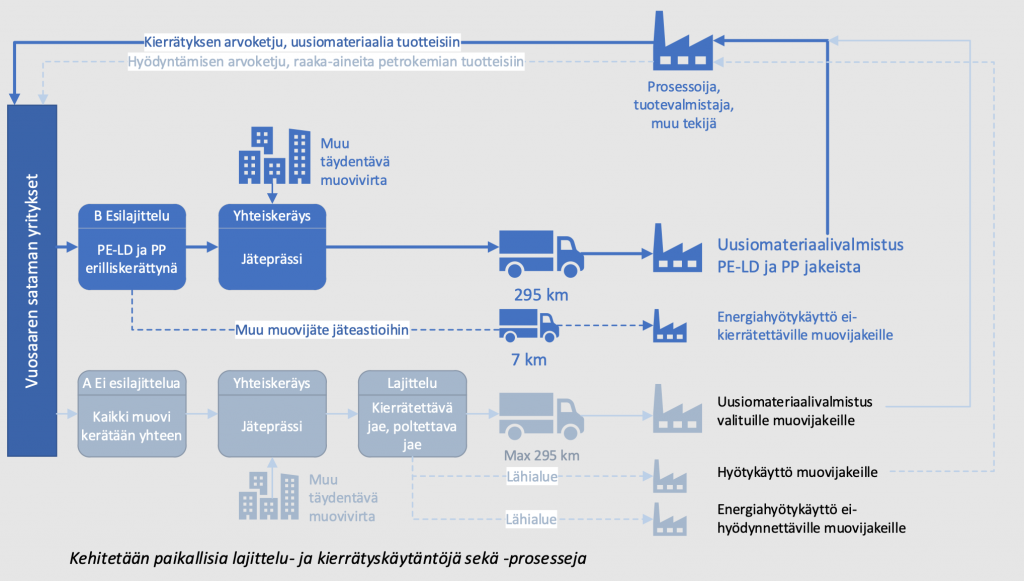
TAKE-HOME MESSAGES
- Companies are enthusiastic about plastic recycling and they want their operations to be more sustainable.
- Piloting provides scientifically valid, practical information on the amount of waste generated in an area and companies’ recycling-related requirements and practices.
- Competing companies can collaborate and gain environmental and economic benefits.
- Cities will be able to persuade companies to adapt the climate goals by launching new pilot projects that focus on emissions reductions and resource wisdom and that benefit companies in the short or long term.
“As the global use of plastics increases, we need recycling to curb this trend. Solutions are created at the local, national and international level. Recycling captures plastic waste for reuse or recovery and offers environmental and economic benefits to businesses.”
– Satu Pasanen, Research Scientist, Circular Economy Developer, VTT Technical Research Centre of Finland
Download
Links

How can carbon-neutral business operations be carried out in an industrial area?

Guide to creating a carbon-neutral industrial area
industrial areas, carbon-neutral, business, Porttipuisto, Hakkila, electricity, heating, traffic, outdoor lighting
The guide outlines measures that help industrial areas move towards carbon-neutral business operations. The industrial areas Porttipuisto and Hakkila in Vantaa were the sites in the guide, which focused on carbon-neutral electricity, heating and traffic. The guide also draws attention to improving and reducing emissions from outdoor lighting in industrial areas.
This solution is suitable for
- cities that aim to be carbon-neutral and would like to motivate companies to contribute to achieving this goal;
- cities that want to know how industrial areas can be made carbon-neutral.
BASIC FACTS
- Location: Porttipuisto and Hakkila in eastern Vantaa
- Life cycle: design phase
- Organisers: City of Vantaa, AFRY Oy, SteraLux Oy
- Time span: 2019–2021
Benefits of carbon-neutral industrial areas
Commercial properties in Porttipuisto and Hakkila industrial areas are connected to the district heating network. The floor area of all the buildings in the areas is well over half a million square metres, so the carbon footprint from energy production is very big. All of the properties in these areas are privately owned, so the city cannot decide on how to introduce new forms of energy. This is why the guide describes various measures to encourage companies to adopt carbon-neutral alternatives that would also benefit them financially.
Vantaan Energia is developing a low-carbon, even carbon-neutral, district heating network. The extension of the waste-to-energy plant in 2022 will play a part in this, as it will make it possible to phase out the use of coal. The company also offers recycled heat options, which can significantly reduce the carbon footprint of industrial areas.
Incentives to use new energy options
Measures taken by Vantaan Energia directly reduce companies’ emissions as the district heating system’s emission factor decreases. Companies can already choose a carbon-neutral district heating option for an additional fee, which will be scrapped, making the option even more attractive.
The city plays an important role as an energy adviser for companies. The city must provide information about investments and construction projects and also make it easier for companies to carry out work that requires permits in industrial areas. The city should also encourage companies to carry out energy audits and speed up the development of company- and industrial area-specific measures to improve energy efficiency. In terms of transportation, the city has a responsibility to improve conditions for commuting in particular. A point that has been largely ignored is that streamlining traffic flows with traffic light settings would reduce travel time and cut emissions. The city should also try to make use of traffic data in industrial areas to ensure that the traffic runs as smoothly as possible. The availability of renewable fuels in the industrial areas must be guaranteed: companies need to have access to gas and charging infrastructure.
TAKE-HOME MESSAGES
- Every industrial area is different but they all benefit from support from the city.
- The city should not try to force companies into carbon neutrality but offer incentives instead.
- Savings are the most important reason for companies to try to achieve the carbon neutrality goals.
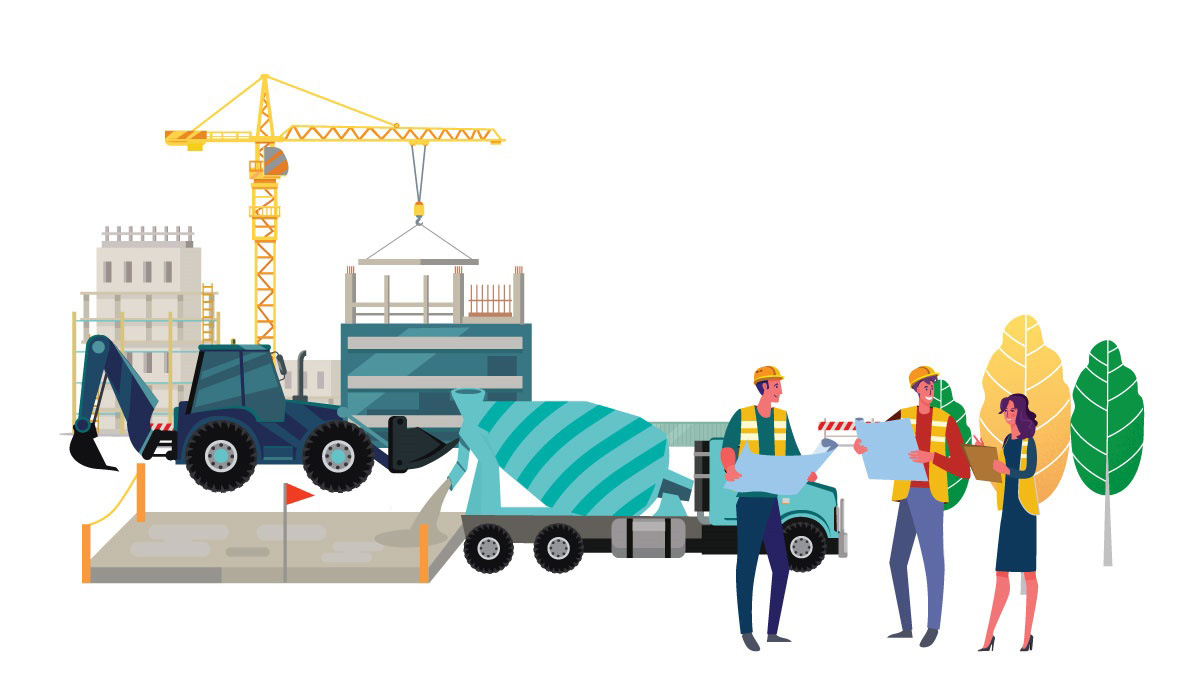
How can a construction site be completely fossil free?

Emission-free construction sites – green deal agreement for sustainable procurement
zero emissions, building and construction, construction sites, heavy machinery and equipment, green deal, public procurement, climate work, procurement methods, Ministry of the Environment, local authorities
The non-binding green deal agreement for emission-free construction sites was published in autumn 2020. The goal of the agreement is to reduce emissions from contracting entities’ construction sites over a long period of time. So far, the agreement has been signed by six major public contracting entities. Anyone can apply the principles of the concept without being a green deal member, but working with others provides more impactful results which are easier for organisations to anticipate.
- 10 years. Ambitious goals for emission-free construction sites have been set for the next 10 years. The concept supports the implementation and site-specific application of environmental requirements that contribute to these goals.
- 100+. The joint dialogue on emission-free construction sites with stakeholders attracted over 100 participants in February 2021. The results of the dialogue were used to amend environmental requirements which will be introduced later.
- 25%. Emissions from transport and operations on construction sites account for 25% of annual greenhouse gas emissions caused by construction activities. This concept gives organisations concrete instructions on how to reduce emissions.
This solution is right for you if
- you are in charge of construction at a green deal member organisation or work as an expert in construction projects and you are looking for more information about environmental criteria;
- you work in an expert role at a non-green deal member organisation and you are looking for examples or more information about environmental criteria;
- you work as a contractor and you want to learn more about emission-free methods to apply on a construction site; or
- you want to learn more about monitoring and verifying the machinery and equipment used on emission-free work sites.
BASIC FACTS
- Project parties: KEINO Competence Centre for Sustainable and Innovative Public Procurement, City of Helsinki, City of Espoo, City of Vantaa, City of Turku, Senate Properties, Helsinki Region Environmental Services HSY
- New public sector organisations are encouraged to join the Agreement on a broad front.
- Time frame: 2020-2030
The green deal agreement for emission-free construction sites launched a long-term joint development project towards less emissions from construction sites
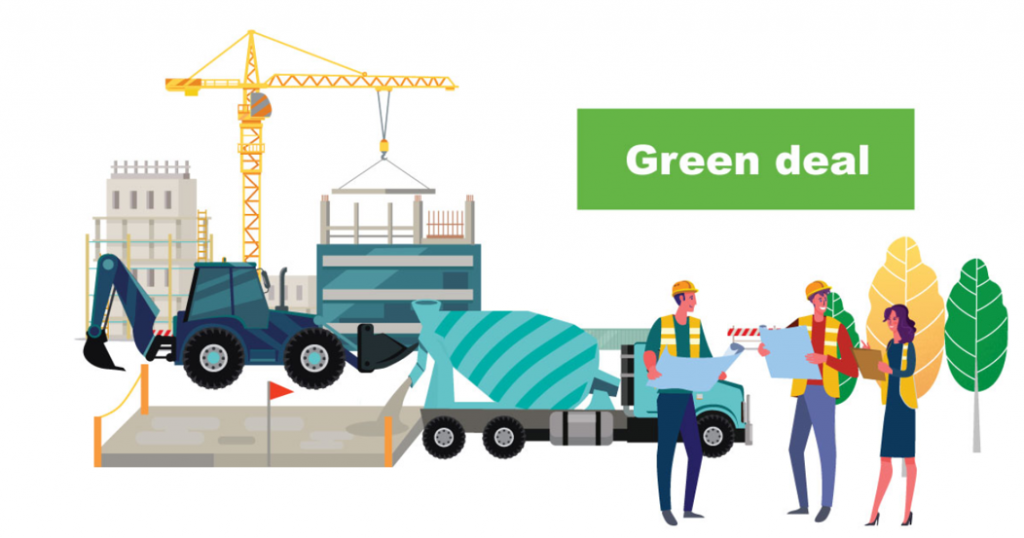
Made between the Ministry of the Environment and public contracting entities, the Agreement contributes to Finland’s goal of becoming carbon neutral by 2035. Procurement decisions can have an impact on a significant proportion of emissions from construction sites and support the achievement of the target of net zero carbon. The green deal agreement focuses on emission category requirements for heavy machinery and transport as well as promoting low-emission motive power types. The purpose of the agreement is to increase the proportion of low-emission heavy machinery and to promote the introduction of new practices and tools both on construction sites and in procurement processes.
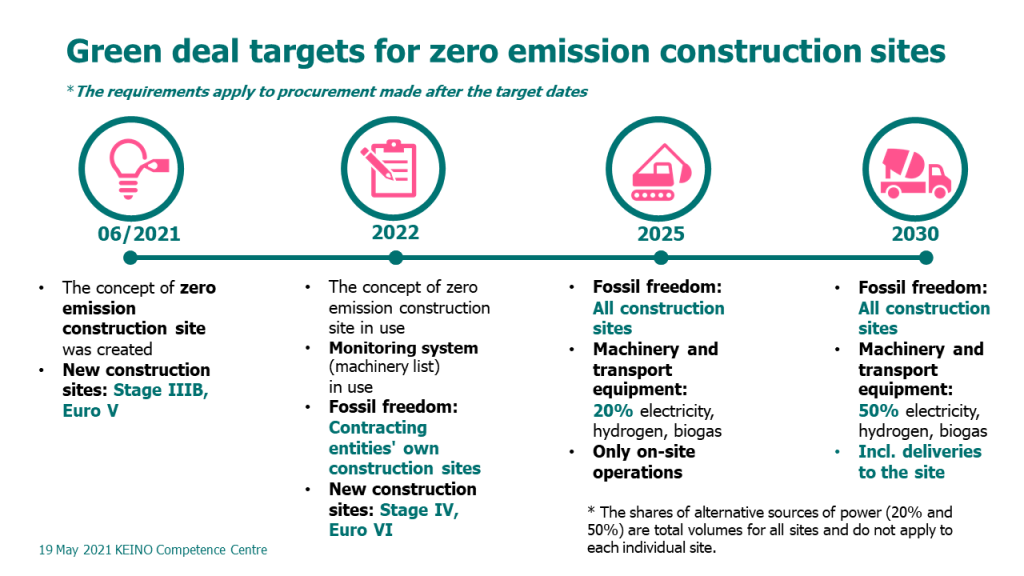
The concept supports the achievement of the agreement’s targets while helping other organisations reduce emissions
The concept of emission-free construction sites has been drawn up as part of the green deal agreement for emission-free construction sites and the HNRY project. The concept supports the implementation of the green deal agreement, but it can also be used by non-green deal members.
The concept provides an overview of principles and practices which are used to reduce emissions from construction sites. The goal of the concept is to reduce emissions, harmful exhaust gases and noise from construction sites. The concept does not cover aspects such as the carbon footprint of building materials or life cycle emissions from construction.
Where applicable, the concept of emission-free construction sites can be used for example in the following applications done in-house or contracted by contracting entities:
- in-house maintenance works;
- in-house building and construction (infrastructure and housing); and
- tendered maintenance works and projects.
A more detailed framework has been defined as part of the organisations’ own strategies and, for example, in the implementation plans of the contracting entities of the member organisations of the green deal agreement for emission-free construction sites.
The concept of emission-free construction sites supports the non-binding green deal agreement for emission-free construction sites made in 2020. Contracting entities which have not signed the Agreement can use the tools provided by the concept to reduce emissions from their construction sites.
There are three types of environmental requirements laid down in the concept:
- Minimum requirements for heavy machinery based on the green deal agreement.
- Methods to promote alternative motive power types (electricity, biogas, hydrogen).
- Other environmental requirements, such as environmental management systems and contract-specific environmental plans.
The concept also contains guidelines and recommendations on how heavy machinery operators can adopt low-emission practices.
Great results through engaging in market dialogue and applying the principles of the concept
The concept does not include direct recommendations on which environmental criteria to adopt, and each organisation must adapt the content of the concept to fit their individual targets and market environment.
The development of the green deal agreement and the concept of emission-free construction sites was boosted by empirical knowledge gained from the low-emission pilot construction sites of the cities of Helsinki and Espoo. Information gained from the pilot projects has been used to develop specifics such as procurement criteria, monitoring, fleet lists and market dialogue. Organisations wishing to promote skills on emission-free construction sites can apply the concept’s environmental requirements and practices in any pilot projects or contracts they might have.
Each year, the member organisations of the green deal agreement for emission-free construction sites engage in joint market dialogues, in which they discuss the requirements and their scopes in more detail. By joining the green deal agreement for emission-free construction sites, contracting entities can participate in the joint development project.
TAKE-HOME MESSAGES
- Goals are the first step towards the implementation stage and only the beginning of the long-term development work.
- Defining the final environmental criteria requires engaging in dialogue and working with companies. If necessary, there is room for adjustments to be made to ensure that the requirements are relevant and that they can be met.
- Anyone can apply the principles of the concept without being a green deal member, but working with others provides more impactful results which are easier for organisations to anticipate.
- Cities/municipalities/organisations can pick and choose the practices that best suit their procurement strategies and construction projects from the concept.
Publications
Concept of emission-free construction sites, version 1.0
The joint concept of emission-free construction sites and procurement criteria will be developed further as the progressive targets laid down in agreement are met. Member organisations provide training to their customers and other key target groups in the application of the principles of the concept of emission-free construction sites and joint procurement criteria.
“The green deal agreement sets forth ambitious joint targets and actions we all need to take to meet the targets. Different parties are strongly committed to working together and under the same rules, and this is also supported by the concept of emission-free construction sites. The green deal agreement offers contracting entities a concrete method of promoting their own net-zero carbon targets while also providing advice and tools that support their work in practice. Sharing experiences and lessons learned and engaging in a dialogue with the market play a key role. Agreements help us to create a long-term vision, towards which we need to take the activities and the market to pave the way for everyone towards a new zero-emission operating mode.”
– Leena-Kaisa Piekkari, Specialist, Ministry of the Environment of Finland
Download
Links
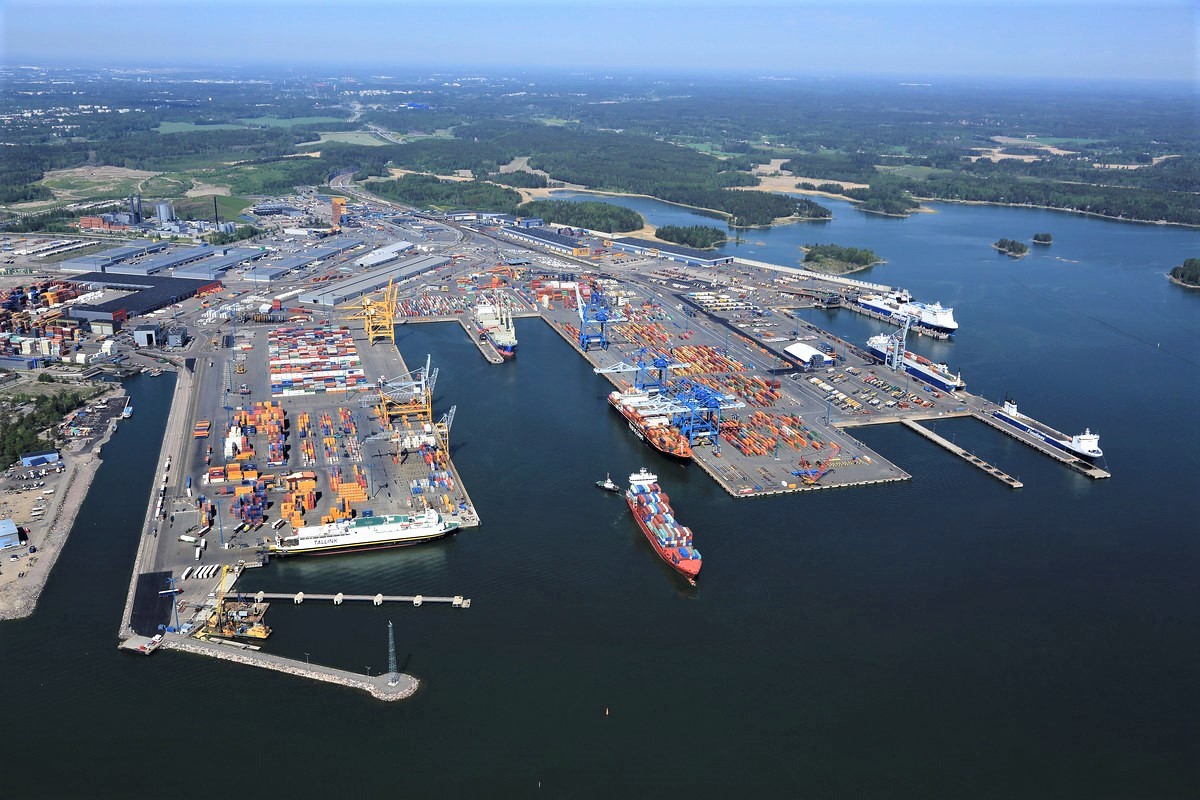
How can machinery contribute to creating a carbon neutral port?

Low-carbon solutions for machinery in cargo port operations at Vuosaari Harbour
machine emissions, cargo port, freight transport, alternative sources of power, road map
The model explored ways to reduce carbon emissions from machines used in cargo port operations, using Vuosaari Harbour in Helsinki as an example. The key themes were low-carbon power sources, the contribution of different partners and the roadmap for reducing emissions from machine operations.
- More than 75% of the CO2 emissions from machines in Vuosaari Harbour are generated by straddle carriers and terminal tractors, so measures to reduce emissions should focus on these types of machines.
- Electrification would appear to be both an emission- and cost-effective solution for energy-intensive machines with high utilisation rates, such as straddle carriers.
- A pilot programme for new technologies has been proposed for 2021–2027, which would pave the way for the launch of low-carbon solutions to the market.
This solution is right for you if
- you are interested in ways and means of reducing carbon emissions from machines, especially in the context of cargo ports;
- you are working on reducing carbon emissions from port machines or port operations;
- you want to promote low-carbon machines in a company or in an industrial area.
BASIC FACTS
- Location: Vuosaari Harbour, Eastern Helsinki
- Time span: 2019–2021
- Organisers: Saara Pellikka from the City of Helsinki’s environmental services was responsible for implementing the concept in close cooperation with VTT Technical Research Centre of Finland, the Port of Helsinki and the following key partners: Finnsteve Oy Ab, Steveco Oy, Multi-Link Terminals Ltd Oy, Oy M. Rauanheimo Ab / Oy Adolf Lahti Yxpila Ab, Container-Depot Ltd Oy / Arctic Container Oy, SA-TU Logistics Oy, Nurminen Logistics Oyj, Alfons Håkans, Konecranes Finland, Kalmar / Cargotec, Royal Terberg Group and Port of Gothenburg (reference site).
Companies interviewed to canvass their commitment and areas for development
The City of Helsinki’s environmental services interviewed companies in Vuosaari Harbour in late 2019 and early 2020 to explore areas for improvement in terms of reducing emissions from machines. A key finding was that companies want to reduce emissions from machinery, but new solutions need to be cost-effective and easy to operate in the port environment. Biofuels and electrification, in particular, were brought up as potential means to achieve this. A summary was prepared on the basis of the interviews, and the following measures were proposed:
- Increasing companies’ understanding of new power sources and emissions reduction solutions that are suitable for port operations (including emission- and cost-efficiency).
- Exploring the types of control measures that the Port of Helsinki could use to encourage companies that operate in the area to use new power systems, and assessing the infrastructure capacity and the necessary changes if a new source of power were to be adopted on a large scale.
The report describes how the emission targets for machines can be achieved
VTT examined measures that would reduce CO2 emissions from the port’s machines by 60% by 2035 (in Finnish: Selvitys ja tiekartta Vuosaaren sataman työkoneliikenteen päästövähennyksille). The study suggests that measures should focus on straddle carriers and terminal tractors, as these types of machine were estimated to generate more than three-quarters of emissions from machines in the area.
It would seem impossible to meet the emission targets without some degree of electrification of the straddle carriers or use of renewable fuel. Electrification proved to be a cost-effective solution for energy-intensive machines with a high utilisation rate, such as straddle carriers. The power grid in the port area would appear to be sufficient for operating battery-operated straddle carriers and terminal tractors. The simultaneous operation of the port’s 33 straddle carriers would require approximately nine 600 kW fast charging points, which would mean an investment of approximately 3–5 million euros.
Incentives for the Port of Helsinki would include compensation for the additional cost of renewable fuel, a discount based on the utilisation rate of electrical machinery and leasing electrical machines and charging infrastructure to operators for testing purposes. The roadmap for emissions reductions in 2021–2035 was presented as a key output.
Piloting of new technologies is at the heart of the carbon roadmap
The carbon roadmap for machine logistics paves a way for the use of market-based low-carbon solutions in the Vuosaari Harbour area. It was proposed that a pilot project should be launched to make it easier for port operators to switch to fully electric machinery and start using renewable fuel so that they could learn how to use new technologies. Operators would test some electric machines, such as straddle carriers and terminal tractors, and the use of renewable fuel in machines of different ages would also be demonstrated in the project. The path to low-carbon machines would have three phases:
- Pre-planning of the piloting project, 2021–2022
- Piloting new technologies, 2022–2027
- Gradual transition to market-based operations, 2027–2035
The roadmap was drawn up by VTT as part of the study and roadmap project on emissions reductions in Vuosaari Harbour.
Machinery emission calculation using a calculation model and training video
The Excel-based calculation model can be used to calculate the carbon emissions and total operating costs of machines and to compare the cost-effectiveness of emissions reduction with different power source options (EUR/tonnes of CO2). The model takes into account both direct emissions (TTW, tank-to-wheel) and lifecycle emissions (WTW, well-to-wheel) from machines. The model is particularly suitable for stevedoring companies that own port machinery, but it can also be applied to other types of machinery, provided that input data is added. The model has two parts:
- The generic model that calculates emissions and costs for an individual year.
- The scenario model that includes the generic model and also calculates emissions for 2019–2035.
The calculation model and an introductory video have been made by VTT as part of the study and roadmap project on emissions reductions in Vuosaari Harbour.
Training video on the use of the model for calculating emissions and costs generated by machines (in Finnish):
TAKE-HOME MESSAGES
- The port environment has special requirements and offers opportunities for measures to reduce emissions from machines.
- The most suitable emissions reduction solutions are found by optimising them according to how much a machine is used and how practical as well as emission- and cost-efficient they are.
- Piloting would make it possible to find the most efficient technologies, operating methods and service models for the port environment, and it would pave the way for the launch of new low-carbon solutions to the market.
“The goal of the Port of Helsinki is to reduce CO2 emissions in the entire port area by approximately 30,000 tonnes by 2035. All operators in the port area need to work together to reduce emissions. The roadmap provided by the HNRY project is a great tool for exploring potential ways to reduce emissions generated by machines in the port area.”
– Andreas Slotte, Head of Sustainable Development, Port of Helsinki Ltd.
Download
Links
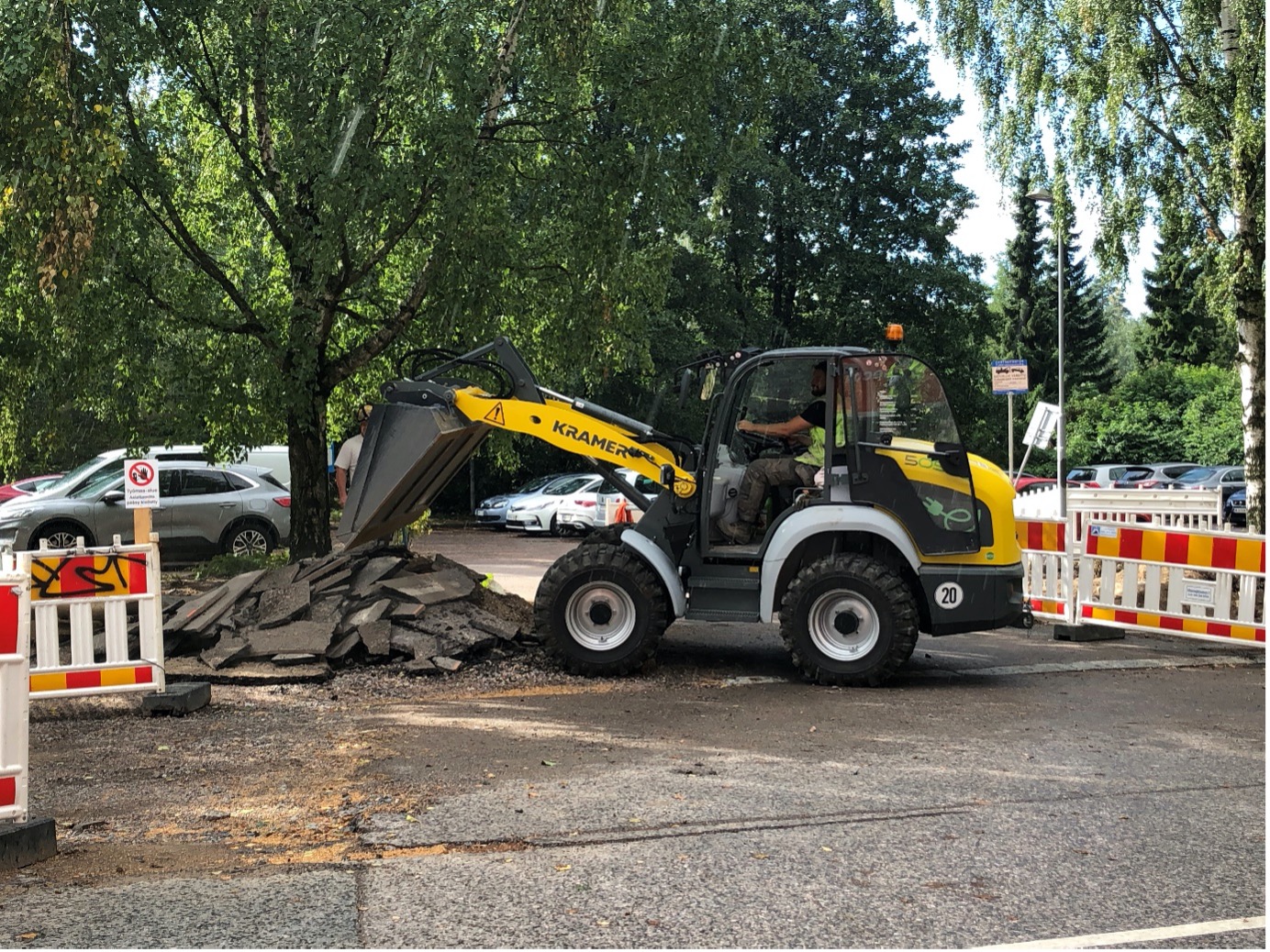
How can we reduce emissions from infrastructure construction sites?

Pilot for a zero-emission infrastructure worksite in Helsinki: turning Kulosaaren puistotie into a cycling street
- low-emission
- construction site
- heavy machinery
- heavy goods vehicle
- fossil-free
- renewable HVO diesel
- alternative motive power solutions
- electric heavy machinery and equipment
- market dialogue
- emission-free construction sites – green deal agreement for sustainable procurement
Construction sites not only cause significant amounts of greenhouse gas emissions but also harmful local emissions. The boulevard of Kulosaaren puistotie was one of the pilot sites in the emission-free infrastructure construction sites project of the City of Helsinki. The objective of these pilot sites was to reduce emissions from construction sites. The machinery and equipment used on the site included four fully electric heavy machinery units, while the rest of the machinery was powered by renewable HVO diesel.
- Electric heavy machinery and equipment. Companies participating in the tender were urged to use electric heavy machinery and equipment. Three fully electric loaders and one mini excavator were used on the site. While in operation, they do not generate emissions or make a lot of noise.
- Positive experiences. Since the summer of 2020, all tendered infrastructure construction sites of the City of Helsinki have been based on low-emission solutions. So far, it seems that having low-emission criteria in the requirements has had very little impact on companies’ motivation to participate in tenders or their pricing.
- 58% less emissions. Thanks to the solutions, emissions from the pilot project were only about 42% of those from a traditional construction site, and the solutions prevented the generation of over 106 tonnes of CO2 equivalent.
This solution is right for you if
- you buy infrastructure construction services;
- you represent an infrastructure company/contractor; or
- you want to reduce emissions from your organisation’s construction sites.
BASIC FACTS
- Location: Helsinki, Kulosaari – the boulevard of Kulosaaren puistotie was converted into a shared in-roadway bikeway, becoming part of the Itäbaana express bike route, one of the main bike routes to the city centre
- Time frame: 12/2019 (dialogue with the market) – 4/2021 (project completion)
- Project parties: City of Helsinki, Urban Environment Division, Housing and Environment; contractor: VM Suomalainen Oy
A carbon-neutral Helsinki can only be achieved by also reducing emissions from construction sites
Emissions from heavy machinery and equipment used on construction sites as well as heavy goods vehicles account for a significant proportion of carbon dioxide emissions generated in cities and municipalities. Moreover, they also generate harmful local emissions, particles and noise that impair air quality in the area. In densely built urban environments, the harmful effects of construction sites are even greater.
Despite this backdrop, current legislation does not give decision-makers enough power to address construction sites’ harmful effects on climate and health, and greenhouse gas emissions caused by heavy machinery and equipment are not regulated. The City of Helsinki has recognised this issue, and one of the goals of the Carbon-neutral Helsinki 2035 Action Plan is to reduce greenhouse gas emissions from construction sites with initiatives such as piloting the use of emission-free heavy machinery and equipment in the City’s infrastructure projects.
The City of Helsinki has also actively participated in international campaigns and projects to promote emission-free construction sites. European cities have exchanged information and experiences for example in the Zero-Emission Construction Sites working group of the Big Buyers Initiative funded by the European Commission and in the E-ZEMCONS project funded by EIT Climate-KIC.
Engaging in market dialogue to ensure a successful tender process
The City of Helsinki launched the market dialogue on zero-emission infrastructure construction sites and the preparation of the procurement criteria in December 2019. A joint market dialogue event with the stakeholders was followed by one-to-one discussions with several infrastructure contractors. Market representatives provided valuable information about aspects such as the current condition of the fleet and the availability of electric heavy machinery and equipment, and they also confirmed the use of the proposed minimum requirements.
Spring 2020 saw the finalisation of the criteria to be used in the tender and, more widely, in the zero-emission construction site pilot project and on low-emission infrastructure construction sites. The invitation to tender for the pilot project of the boulevard of Kulosaaren puistotie was published in May 2020.
Contract documentation was being drawn up at the same time with the preparation of the green feal agreement for emission-free construction Sites. The requirements laid down in the invitations to tender for the City of Helsinki’s infrastructure contracts are more ambitious than the current requirements of the green deal agreement, which defines a joint minimum level, while cities have the option to impose stricter criteria at a faster pace.
Trialling zero-emission solutions on the construction site of the boulevard of Kulosaaren puistotie
Launched in July 2020, the conversion of the boulevard of Kulosaaren puistotie into a shared cycle lane is a pilot project in which greenhouse gas emissions and harmful local emissions generated on the site were reduced using concrete methods. The equipment fleet used on the site consisted of four fully electric heavy machinery units (three 4.2-tonne loaders and one mini excavator), while the rest of the equipment, apart from a few exceptions, was powered by renewable HVO diesel.
The other fossil-free fuels allowed to be used on the site were biogas, hydrogen, ethanol and renewable fuel oil. The heavy machinery was at least Stage IV compliant, while heavy goods vehicles were compliant with the Euro VI emission standards. Light equipment (equipment with a maximum power of 4 kW) was required to be primarily powered by electricity. The electricity used on the site was required to be produced from renewable energy sources, and heating on the site had to be based on district heating, fossil-free biofuels or green electricity. In addition, the contractor was required to have obtained environmental certification. The use of electric heavy machinery and equipment was encouraged by awarding the most economically advantageous quality scores (in which the price accounts for 70% and quality for 30%) for a maximum of five electric heavy machinery units.
The list of equipment used in the project was updated whenever new machinery and equipment was brought to the site. The consumption of fuel and electricity on the site was reported monthly in site meetings. The customer and contractor developed monitoring and reporting together.
Positive experiences pave the way for future projects
When the majority of the Kulosaari project had been completed, the HNRY project team produced a rough calculation of the emissions generated during the project compared to a project based on traditional solutions. The calculation was based on fuel and electricity consumption and equipment uptime data obtained from the contractor. The calculation showed that, thanks to the solutions used on the site, the emissions from the site were about 42% of the emissions of a similar project carried out using traditional solutions. The amount of emissions that were prevented was over 106 tonnes of CO2 equivalent, or the annual carbon footprint of roughly ten people living in Finland.
Principles of zero- and low-emission construction sites have already been utilised on several infrastructure construction sites of the City of Helsinki. Encouraged by the success of the pilot projects, all tendered infrastructure construction sites of the City of Helsinki have been based on low-emission solutions since the summer of 2020. The experiences have primarily been positive, and it seems that having low-emission criteria in the requirements has had very little impact on companies’ motivation to participate in tenders or their pricing. In 2021, the City of Helsinki aims to apply the principles of zero-emission constructions sites compliant with the Green Deal agreement to all of its tendered infrastructure, construction and maintenance projects.
TAKE-HOME MESSAGES
- Engaging stakeholder groups and active market dialogue are focal points for formulating functional and suitably ambitious purchasing criteria.
- The ambition of the City of Helsinki to cut down the emission levels is shared within the infrastructure companies and the goals are to be realized through the procument requirements.
- Different types of collaboration platforms are recommendable for sharing the experiences and lessons learnt.
- Having an open mind is worthwhile – you learn by doing and the pace of development might surprise.
“Contractors’ ability to meet low- and zero-emission requirements seems to be improving quickly, so reducing emissions from construction sites in line with the green deal agreement seems like a realistic goal.”
– Jarkko Karttunen, Head of the Urban Environment Division, City of Helsinki
“The Kulosaari project got me thinking about how, by making small changes, you can get the same output but with less emissions. We are already using renewable electricity throughout the company. There are plenty of great and competitively powered and priced low-emission products and services available in Finland, but due to the prejudice against these solutions, there is still lots that needs to be done, in particular when it comes to people’s ideas about quality.”
– Tim Karike, Communications Manager, VM Suomalainen Oy
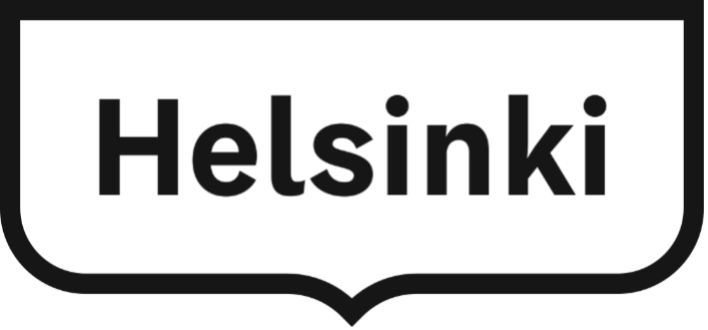
Download
Links

How does the public sector support companies’ sustainable product development and innovation?

Innovative public procurement as a tool for developing sustainable markets
public procurements, procurements, innovation, product development, product development and innovation, partnership model
Innovative public procurement is a means for the public sector to promote and support the growth of companies that produce sustainable solutions and their product development and innovation activities. The support is given to the company by procuring a solution for a public sector operator. It is directed at the acquisition of a new sustainable product or service, or the support can be used to build a new procurement model.
- Steering effect: public procurements have a steering effect in the promotion of sustainable social and economic growth.
- 10%: in its resolution of 10 September 2020, the Finnish Government committed to increasing the amount of innovative public procurement to 10 percent of all procurement by the end of the parliamentary term.
- EUR 3.5 billion: 10% of public procurements means EUR 3.5 billion every year: significant business opportunities for companies that develop sustainable solutions.
This solution is right for you if
- you are interested in practical ways for the public sector to support the transition to sustainability;
- you are looking for ways to implement your company’s sustainable innovations in collaboration with public sector operators;
- you want to learn about practical tips for companies interested in submitting offers to a competitive bidding process for innovative public procurement.
BASIC FACTS
- Organisers:
- University of Turku, Finland Futures Research Centre (FFRC), Essi Silvonen
- Specialists and participants in the solutions forums in the HNRY project
- The concept has been piloted in practice with Elenium Oy’s Henri Haikonen
What is innovative public procurement?
Innovative public procurement provides companies and public procurement professionals with new procedures and evaluation methods that require different skills than conventional procurement methods. In the model, public operators are clients and companies that produce solutions. The goal is to produce scalable, socially sustainable new solutions. The right to use these solutions often remains with the company, which can also apply them in its future commercial activities.
An industrial area in the planning or construction phase can be the target of innovative public procurement. In this regard, the innovative public procurement process is suitable for both infrastructure development projects and operational sites that can be used to demonstrate a clear, positive impact on the environment through new and innovative approaches.
What sets innovative procurement apart from the conventional process is that the object or process of procurement is not precisely defined. An innovative procurement contract may include the development and piloting of a new solution. When a procurement is directed at the desired effects and outcomes instead of an accurate implementation model, it gives the supplier more freedom to propose alternative solutions.
Technological developments and new products and services in the development phase mean that companies are constantly creating new solutions to meet the public sector’s requirements. Innovative public procurement makes it possible to support and apply the solutions at an early stage, whereas the more conventional procurement legislation has decreed that products and solutions can only be procured once they are widely available on the market. However, a new product or technology does not have value in itself from the client’s point of view. It is important when new solutions could potentially offer greater benefits and be more sustainable than conventional solutions.
Public procurement has a steering effect in the promotion of sustainable social and economic growth
The annual value of public procurement in Finland is about 35 billion euros, which represents 15% of Finland’s GDP. Two thirds of public procurement is accounted for by municipalities and joint municipal authorities, and a third by the state. Finland has set a goal to be carbon-neutral by 2035. To achieve this, it has resolved to carry out a national circular economy programme. It is clear that the state and the public sector alone cannot create solutions to achieve carbon neutrality. Achieving the target requires companies to invest in product development and innovation to provide solutions for both the public and the private sector.
Public procurements are the most impactful means available to the state and the public sector for steering the economy and bringing about practical changes. In order to be able to direct public procurement towards impactful sustainable solutions, those in charge of public procurement need an operating model that is based on cooperation with companies and also serves as a roadmap for creating practices and information that lead to sustainable public procurement. The innovative public procurement operating model is built to meet this need.
How to make public sector needs and companies’ abilities match?
Conditions can be created at different stages of the procurement process for ensuring that the needs of the public sector match companies’ ability to create solutions. The process starts with the identification of development of procurement needs and turns into collaboration during the contract period. Various means can be used to specify the challenges and needs, including strategic planning, cooperation between client organisations, research cooperation, predictions of future procurement and investment needs, market dialogue, impact assessment as well as experiments and pilots.
It is important that the client actively explores the range of new solutions, shares information about its needs and goals and engages in dialogue with companies in the procurement preparation phase. This is the time for companies and solution providers to make the client aware of the solutions they can offer and to have a say on how the client’s goals develop during the procurement planning phase.
In the tendering phase, the procedure defined by the client and the criteria for comparing the offers need to be such that they make it possible for new solutions to be successful and allow for their features to be improved and tested within the contract framework.
Elenium Oy – innovative public procurement is helping the company to become an international supplier of logistics and materials management software solutions
Elenium Oy built a weighing and inventory management system for a joint procurement contract by five waste companies; MaterialPort allows users to collect all necessary information about inbound and outbound loads as well as to monitor material flows in the waste management centre at various stages of the process. The system also features digital services for clients. During the process, Elenium Oy effectively developed a product, which it can sell to other logistics and waste management operators. The innovative public procurement process was, in itself, an incentive to develop the product, but it should be noted that the company also invested a significant amount of its own resources in the development of MaterialPort.
Based on Elenium Oy’s experiences, Henri Haikonen strongly believes that participating in an innovative public procurement process can be a momentous opportunity for companies. Companies are also best placed to solve many of society’s functional challenges, so solutions that promote collaboration between public organisations and businesses are important for the development of sustainability solutions. He gives the following practical advice to companies that are interested in developing their own operations with the support of innovative public procurement:
- Select development projects that support your own visions for the future.
- Find out and understand what kind of project you are getting involved in.
- Know your resources and relate them to the project on offer.
- Take a close look at your target market.
- Prepare for the public procurement process.
TAKE-HOME MESSAGES
- In the tendering phase, the procedure defined by the client and the criteria for comparing the offers need to be such that they make it possible for new solutions to be successful and allow for their features to be improved and tested within the contract framework.
- The procurement contract may include development work, piloting or incentives to carry out these activities. An innovative procurement process can also refer to an innovative way of carrying out a procurement process or to procurement that encourages suppliers to innovate. It can also mean using procurement as an instrument of innovation policies to develop business operations and innovation activities in companies.
- The procurement process is often intensive; both suppliers and end users need to become engaged in the process.
- A company bidding in innovative public procurement must carefully consider its own investment in the development efforts and assess the commercial value of the resulting solution. It is always important to look at and negotiate the entire package alongside the price, to consider possible contractual incentives and continuous development, the replicability and scalability of the solution and the brand value that the project may create.
“Implementing innovative public procurement is an opportunity for a company to boost its product development, but it is also a demanding process, and if a company commits itself to it, it needs to determine what it wants out of the project and how the project supports the company’s strategy.”
– Henri Haikonen, Elenium Oy 21.3.2021

How can climate action be measured in industrial areas?

Measuring carbon neutrality and resource wisdom
emission-free construction site, monitoring system, Technical Research Centre of Finland (VTT), life cycle assessment, measurement, emission calculation, resource wisdom, climate change mitigation
In order to effectively monitor the carbon neutrality and resource wisdom measures of industrial areas, emission calculations and monitoring tools must be continuously developed and applied. Emission reductions achieved in industrial areas are significant in view of the climate targets of their adjacent cities as the targets cannot be met without a contribution from businesses.
• Two construction sites: low-emission construction machinery were piloted in Espoo and Helsinki.
• Cooperation: the development of a monitoring system for construction site emissions started as a collaboration between the Technical Research Centre of Finland and the contracting entities of cities that are signatories to the sustainable procurement Green Deal agreement for emission-free construction sites.
• Plastic: the impact of plastic recycling on greenhouse gas emissions from waste treatment was assessed in a trial carried out in the Vuosaari Harbour area.
This solution is right for you if
- you are looking for general information on measurement and calculation methods related to carbon neutrality and resource wisdom targets for industrial areas and construction sites.
BASIC FACTS
- Location: emission-free construction site pilot in Espoo and Helsinki, Vuosaari Harbour, Blue Industry Park in Turku, energy efficiency project in Vantaa
- Implemented by: participants in the HNRY project (Carbon-neutral and resource-wise industrial areas project)
Emission reductions in industrial areas are important for the climate targets of the participating cities
The cities have set ambitious climate targets, and they aim to achieve carbon neutrality by 2035. When a city aims for carbon neutrality, it means that emissions produced within that area are reduced to a set level (e.g. 80% of the level of 1990) and the remaining emissions are compensated.
With regard to resource wisdom, cities aim for long-term targets that are based on EU targets (by 2040). Becoming resource-wise requires close interaction and development work, including in the management of materials and logistics, between the different project participants. For example, possibilities for resource-wise and energy-efficient use of construction machinery were reviewed at Vuosaari Harbour. There is also massive potential in materials recovery and intensifying circular economy as the plastic pilot project showed.
Basis and scope of emission calculations
The state and municipalities base their emission calculations on production or area. They include all greenhouse gas emissions produced within the set area (Scope 1) and emissions from the production of energy purchased from an outside source (Scope 2). When measuring the carbon neutrality of an individual business, the calculation can focus on direct GHG emissions (Scope 1), such as the use of fuels in energy production and in vehicles, and on indirect GHG emissions (Scope 2), such as emissions from the production of purchased electricity and district heating. The rest of the emissions are compensated (Scope 4).
For industrial areas, it is best to base the calculation on consumption so that emissions from the production, transport and disposal of products and services produced and consumed within the industrial area during a set period of time (Scope 3) are taken into consideration. An example of a consumption-based calculation can be found in the concept of emission-free construction sites for the Lukutori construction site.
Emission-free construction site – calculation scope and tools
Constructions sites usually have clear boundaries within which direct emissions are produced. Maintenance sites are not as clearly defined. Materials, fuels and purchased electricity mainly come from outside these boundaries. The scope of the emission calculation for a construction site depends on which processes are identified as most significant in terms of emissions.
In the Lukutori pilot project in Espoo, the majority of emissions were identified as being indirect emissions. The consumption-based calculation used also factored in emissions from the use and production of the fuel in the machinery, the production of batteries and electricity used for electricity-powered machinery, the production of electricity used for on-site power generation and the production and transport of materials used on site.
The emission calculation for the Kulosaari pilot construction site in Helsinki included emissions from the production of fuels (including biofuel) used in construction machinery as well as emissions from the production of electricity used by machinery and the construction site.
The lack of an established monitoring system has made it difficult to monitor the data needed for emission calculations. The parties to the Green Deal agreement for emission-free construction sites are in the process of developing a monitoring tool to be introduced by the end of 2022. The introduction of the monitoring tool and new practices will require contractors and machinery operators to be trained in order to ensure the quality of the data collected.
Data and tools for measuring and monitoring the climate action of industrial areas
An extensive overview on the factors affecting the resource wisdom and carbon neutrality of an industrial area has been drawn up and included in the Turku Blue Industry Park Guide. The scale does matter as energy-efficiency investments and the energy production of an entire industrial area or a cluster of businesses can bring significant emission reductions. An area can even become climate positive.
A pilot project that trained individual companies using company-specific customised content also produced training material for public use. Company training can be used to raise awareness of emission sources, assist with calculations and the implementation of climate measures.
In Espoo and Helsinki, the emissions of an emission-free construction site were compared to those from an “ordinary” construction site. The sustainable procurement Green Deal agreement for emission-free construction sites will help to harmonise practises and introduce monitoring tools for contracting entities.
Municipalities’ emission calculations tend to follow common guidelines but individual organisations and companies can apply such varying scopes and methods for calculating indirect emissions that it compromises the comparability of the results. There is a need for harmonisation, and this is why the experience gained during projects should be put into practice more widely.
TAKE-HOME MESSAGES
- The most sensible emission calculation method for an industrial area is consumption-based calculation.
- It is important to maintain the transparency of the calculation method and the reasons for the set scope.
- There is a need for methods to be harmonised, and therefore the experience in calculation methods and tools gained during projects should be actively put into practice more widely.
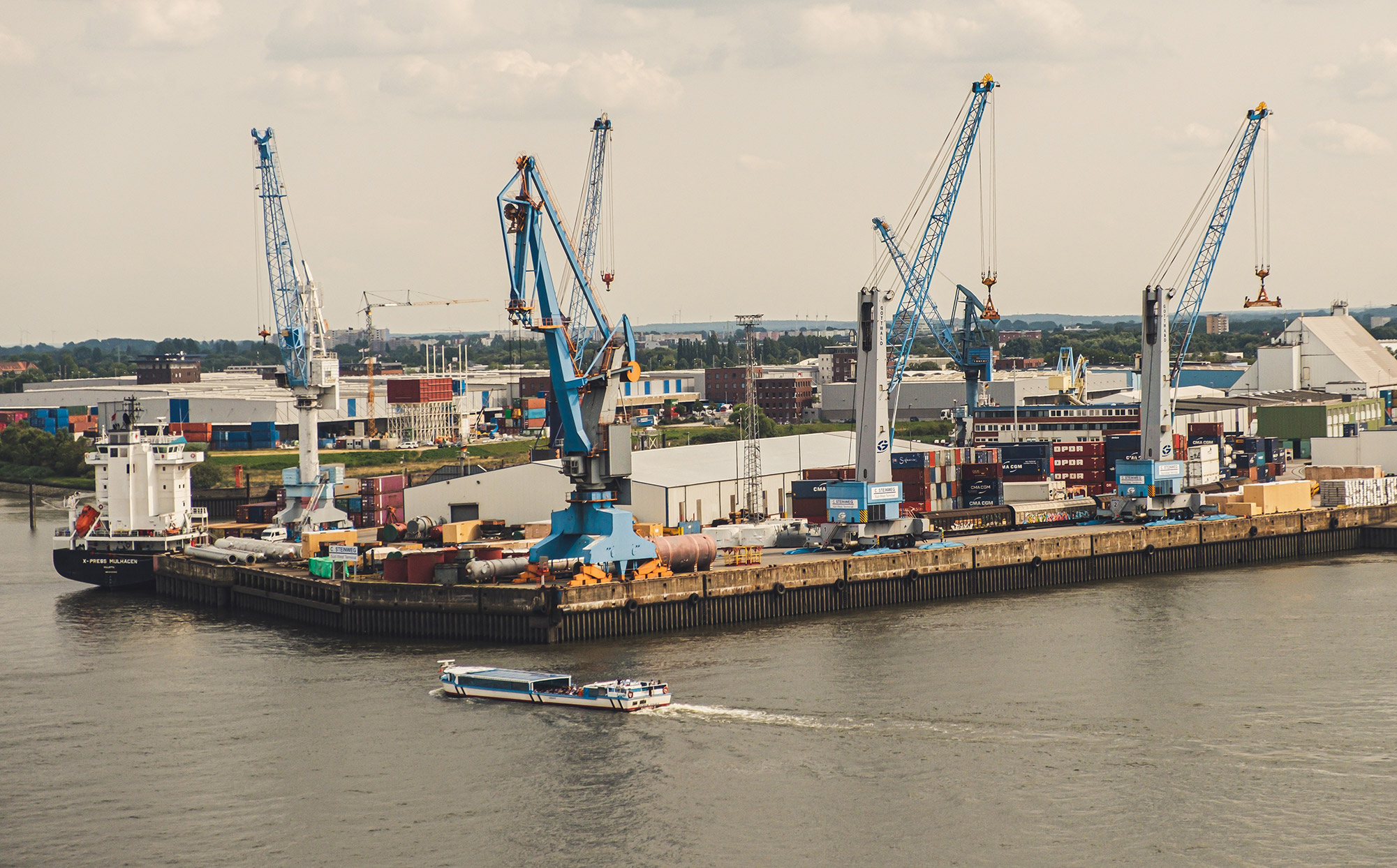
Is carbon neutrality and resource wisdom in a gated industrial area too narrow a perspective?
A resource-wise and carbon-neutral maritime industry network
reduce, reuse, recycle
The project developed an optimal operating model for flows of materials, resources and information in the Blue Industry Park and Turku Shipyard. The model can be used to achieve resource wisdom and carbon neutrality throughout the supply chain.
- 20–30% increase in value-adding operations.
- 3–7% reduction in material loss.
- 20% better production turnaround time through supply chain transparency and management.
- 5% lower material costs through centralised procurement.
This solution is right for you if
- you operate in the supply chain of Turku Shipyard;
- you operate in a manufacturing industry supply chain;
- you want to streamline your supply chain operations.
BASIC FACTS
- Location: Perno district, Turku. Next to Turku Shipyard.
- Industrial area life cycle: planning phase
- Organiser: Blue Industry Park Oy.
- Time span: 5–10 years from 2021 onwards.
- 600 companies in the supplier network.
- The maritime industry network in southwestern Finland employs 11,000 people.
- The turnover of the maritime industry network was EUR 3.3 billion in 2019.
The aim is to increase the efficiency of the maritime industry network
The concept identified how the operations of the maritime industry network could be streamlined, and an operating model was created for the planning and implementation of these improvements. The aim was to optimise the material, resource and information flows between the Blue Industry Park (BIP) and Turku Shipyard. The project assessed what kind of operating methods the companies in the maritime industry network should use in order to make the network’s operations as resource-wise and carbon-neutral as possible. Finally, it was determined what kind of control system would support resource-wise and carbon-neutral operations.
The logistics centre offers the best support to resource-wise and carbon-neutral operations
The concept determined which activities should be located in the BIP area in order to make the maritime industry network as efficient as possible and to support resource-wise activities. The key functionalities were production facilities and the logistics centre.
The need for production facilities varies: some operators require a small workshop while others need a larger production facility. The premises to be built must also be adaptable so that they can meet the changing demand. Pre-assembly and modularisation would also reduce the logistical burden in terms of traffic volumes and packaging materials. Traffic volumes are reduced when larger entities are transported and there are fewer deliveries of parts and components in the area.
Recycling reduces material waste
Recycling packaging waste and standardising transport packaging in the area would be very beneficial. If standardised methods were used for recyclable packaging materials, logistics operations would be clearer and the volume of packaging materials in the area would be reduced.
Building a centralised recycling centre in the BIP would serve companies in the area and help ensure that waste materials are recycled. The recycling centre would operate in the area between the BIP and the shipyard, which would be ideal for all parties.
With regard to the location of functionalities, traffic going into the shipyard must also be considered. The logistics centre should be located either beside or in the immediate vicinity of the production facilities in order to avoid any unnecessary traffic.
Information creates trust
Yhteistoiminnan ja resurssiviisauden edistämiseksi tarvitaan mitattua tietoa. Konseptiin liittyen määriteltiin viisi tärkeitä mittaria:
Measured data is required to promote collaboration and resource wisdom. Five important indicators were identified in relation to the concept:
- Security of supply of incoming materials
- DIFOT (Delivered In Full and On Time)
- Security of supply of site-specific material packages
- DIFOT (Delivered In Full and On Time)
- Progress of the site-specific plan
- Timing and accuracy of master production scheduling
- Timing and accuracy of detailed planning
- Implementation of the plan content
- Monitoring deviations
- Work package-specific monitoring
- Delivery line-specific monitoring
- Monitoring of transport volumes
- Monitoring of inbound logistics
- Monitoring of reverse logistics and material loss, surplus/waste
- 3R strategy (Reduce, Reuse, Recycle)
TAKE-HOME MESSAGES
- Material wisdom: centralised materials management can reduce material waste.
- Resource wisdom: minimising the amount of surplus material with more careful planning.
- Information wisdom: the information flow generated by the digital platform enables supply chain management and development.
“Stopping structural waste is the only way to save the planet.”
–Ari Viitanen, HPJ CarinaFour
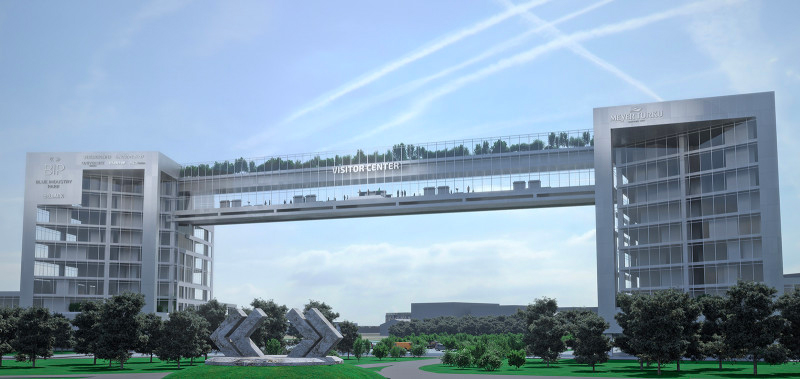
How to create a new resource-wise and carbon-neutral industrial area?

Blue Industry Park: the new resource-wise and carbon-neutral industrial area
hiilineutraali teollisuusalue
When building a carbon-neutral and resource-wise industrial area, it is necessary to take into account not only the planning but also the construction of the area and its day-to-day operations. The Blue Industry Park is an area that is gradually being built beside the Turku Shipyard, and it will be a functioning ecosystem of manufacturing industries and service operators. It takes the expertise and willing of all companies to achieve resource wisdom and carbon neutrality in the area.
- Blue Industry Park Oy. Established during the project to lead the construction of the area.
- Great transport links. Deep-water channel, E18, railway and distance to the airport 10 km.
- 55 hectares. Total area
This solution is right for you if
- you operate in the supply chain of Turku Shipyard;
- you operate in a manufacturing industry supply chain;
- you want to streamline your supply chain operations;
- you are planning a carbon-neutral and resource-wise industrial area;
- you are a contractor or developer in a carbon-neutral and resource-wise industrial area;
- you are a public operator, such as a planning officer, and you want to know how carbon neutrality and resource wisdom are implemented.
BASIC FACTS
- Location: Perno district, Turku. Next to Turku Shipyard.
- Industrial area life cycle: planning phase
- Organiser: Blue Industry Park Oy.
- Time span: 5–10 years from 2021 onwards.
- The maritime industry network in southwestern Finland employs 11,000 people.
- The value of Turku Shipyard’s order book in Q1/2021 is EUR 6.5 billion, cruise ship deliveries until 2026.
Towards a sustainable future
Blue Industry Park is a close-knit and diverse community of companies and research institutes, which are leading the change. There are no limits to its growth opportunities. The scalable spaces and shared resources provided in the area reduce the need for non-essential investments and enable business development in a sustainable and commercially viable manner. The community is responding to megatrends of production modularity and circular economy on a scope never seen before.
New technologies and cooperation are prerequisites for success
The concept guidelines do not provide ready-made solutions for the future, but they encourage all parties to share their expertise to achieve the shared goal. For the area to be successful, the best and most sustainable technologies and operating models available must be applied in every phase and solution.
The guidelines cover solutions for design and civil engineering, buildings and operations as well as transport.
Blue Industry Park’s ecosystem also includes service companies such as occupational health care, lunch restaurants and a visitor centre. Renewable energy sources are preferred, of course, and carbon neutrality is achieved by combining several solutions.
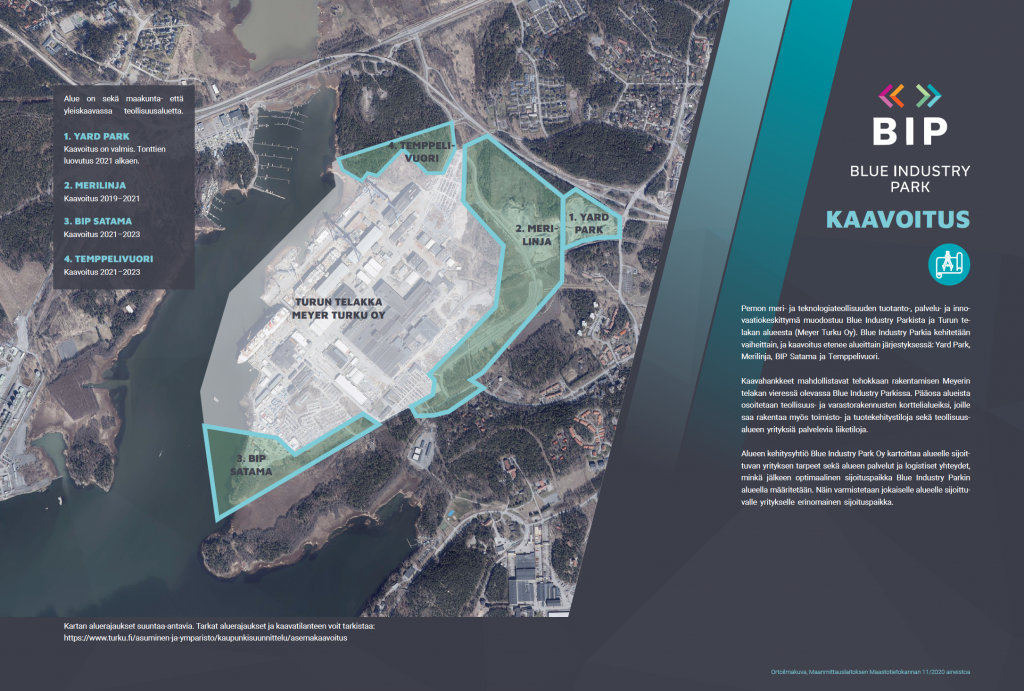
Research collaboration with universities
It is valuable for companies operating in the area that there are four institutes of higher education in Turku with research related to the maritime industry and maritime logistics. Blue Industry Park is a platform for productive cooperation in research projects and the supply of skilled labour both now and in the future.
The universities in Turku cover disciplines that are relevant to planning and building the area, such as energy technology, structural engineering, circular economy, economics and industrial management engineering.
TAKE-HOME MESSAGES
- The area’s location in relation to existing transport links and major customers is essential to minimise emissions from transport.
- When building the area, the use of land masses in the region and the area under construction must be optimised so that unnecessary transportation and costs can be avoided.
- Renewable energy production, transmission and storage solutions need to be considered at the planning phase.
- The flexibility and modularity of the facilities improve their occupancy rate and cost efficiency.
- Sharing machinery and equipment makes it easier to adopt new eco-friendly technologies and reduces the number of equipment needed in the area.
- There must be a leader with a clear role to create an area that runs on synergy and cooperation.
”Companies must assess and develop their practices: new ideas only come from doing things differently. We know that those who can realise their full growth potential, find the right partners and work in a carbon-neutral and resource-wise manner will be successful.”
– Tero Lahti, CEO, Blue Industry Park Oy.



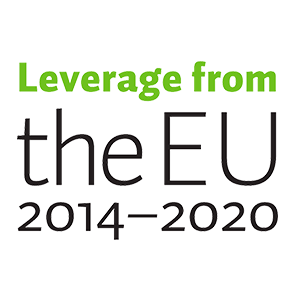
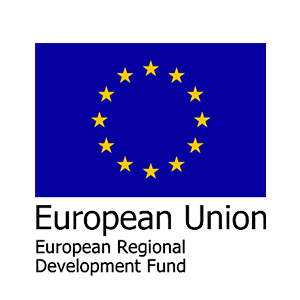
 VTT kehittää Helsingin, Espoon, Vantaan ja Turun yritysalueille vähähiilisiä toimintatapoja
VTT kehittää Helsingin, Espoon, Vantaan ja Turun yritysalueille vähähiilisiä toimintatapoja